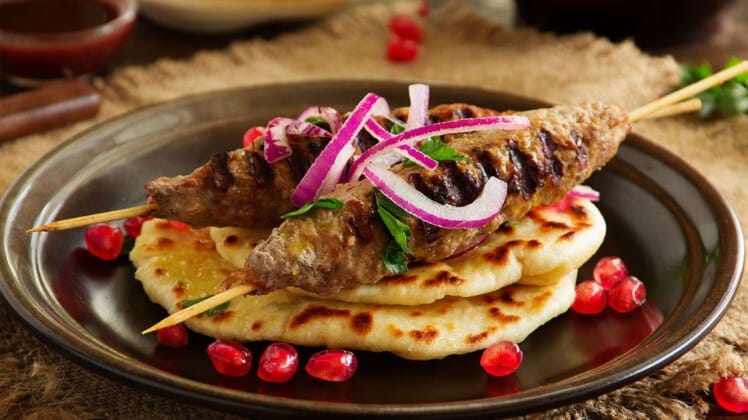
The story of Persian cuisine is one of power, assimilation, and geography. In 475 BCE (Before Common Era) the Persian Empire ruled over forty percent of the world’s population, and at its heart was Iran.
During its time in power, the Persian Empire built aquifers and qanats to route underground water, turning deserts into fertile lands. This innovation, along with the varying seasons of Iran, something that’s fairly unusual in the Middle East, allowed the Persian Empire to cultivate fruits, herbs, and more.
CHECK OUT: If you enjoy red peppers, grilling, or rich stews and soups, a Balkans cuisine could be for you.
By 331 BCE, Alexander the Great had conquered the empire, and over time, Persian cuisine assimilated to those who invaded, from Arabs to Turks, Mongols, and Uzbeks. As with any cuisine, a region’s evolving tradition is only one half of a culinary story, access to ingredients is the other.
Variety of Persian Cuisine
This is where geography once again helps shape Persian Cuisine. Iran shares a border with Iraq, Turkey, Azerbaijan, Turkmenistan, Afghanistan, and Pakistan. Plus, it’s just across the Persian Gulf from Saudi Arabia and the United Arab Emirates. Throughout human history, the names of those countries may have changed but geography has not.
CHECK OUT: Belgium’s cuisine is far more than waffles and chocolates. It’s fries, beers, and mussels too.
This location made Iran one of the central points along an ancient trade network known as the Silk Road. It lasted from 130 BCE to 1453 CE (Common Era) and connected regions from across the world in commerce. For roughly 1500 years, Persian cuisine had access to exotic ingredients coming from Asia, Africa, and Europe, along with the fresh produce it cultivated locally like pistachios, saffron, mint, oranges, and pomegranates.
It’s because of this access and history that Persian cuisine is so fantastically varied. There’s a sense of wonderment in the knowledge that there is a Middle Eastern iteration of Russian borscht, and that you can find an Asian-style noodle soup that’s traditional.
Persian cuisine is also packed with rice dishes, cheese, a variety of flatbreads, and stews.
CHECK OUT: What makes Italian cuisine the world’s most popular?
Dishes of Persian Cuisine
Kabob: Spiced strips of minced lamb, chicken, or beef. Grilled over a fire and served on a flatbread. Toppings vary and include charred tomatoes, sumac dusted rice and mixed-leaf herb salads.
Fesenjoon: Chunks of chicken or meatballs, spiced and cooked until light brown. The meat is then stewed in a sweet and savory sauce made from pomegranate puree, chopped onions, and ground walnuts.
Ash e Reshteh: A soup made from Chinese-style noodles, beans, herbs, spinach, and beet leaves. Topped with fried onions, mint oil, and a fermented Middle Eastern sour yogurt.
